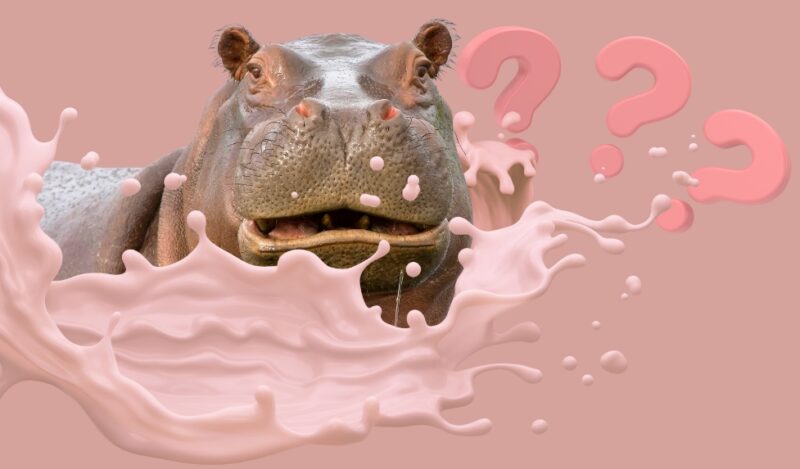The rumor has been circulating for years: “Hippo milk is pink!” But is there any truth to this fascinating claim? Dive into the world of these semi-aquatic giants as we explore this question and the unique biology behind the color of milk.
The Basics of Mammalian Milk
Mammals are fascinating creatures. Among the various things that set them apart from other animals, the ability to produce milk for their young is one of the most defining.
Origins of Milk Coloration
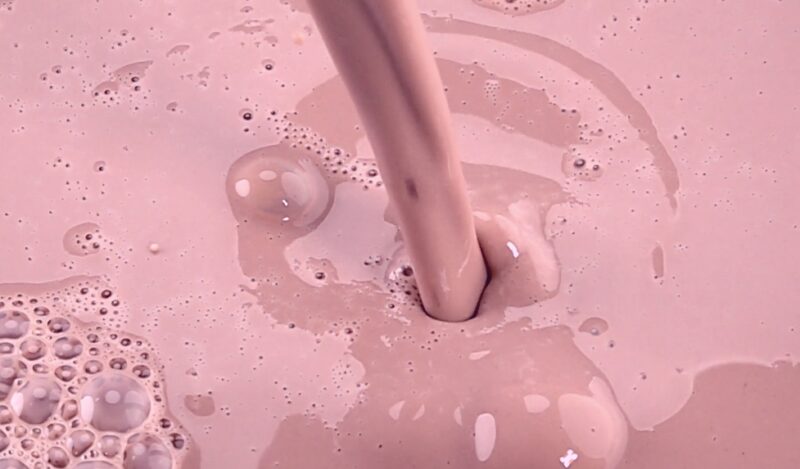
Every mammal’s milk has its own unique composition tailored to the specific needs of their offspring. This can lead to variations in color, texture, and nutritional content. But what exactly gives milk its color? The primary components responsible for the coloration in most mammalian kinds of milk are:
- Fat: This gives milk its creamy hue.
- Proteins: Especially casein, which may influence the milk’s opacity.
- Carotenoids: Natural pigments found in many foods.
Variations Across Species
Not all mammals produce the familiar white or off-white milk we associate with cows. For instance:
- Seals and Whales: Their milk is often thick and can appear more like a fatty paste than the liquid we’re familiar with.
- Donkeys: Produce milk that’s almost translucent.
But what about hippos? To get to the bottom of the pink milk mystery, we first need to understand the biology and lifestyle of the hippopotamus.
The Hippopotamus: An Overview
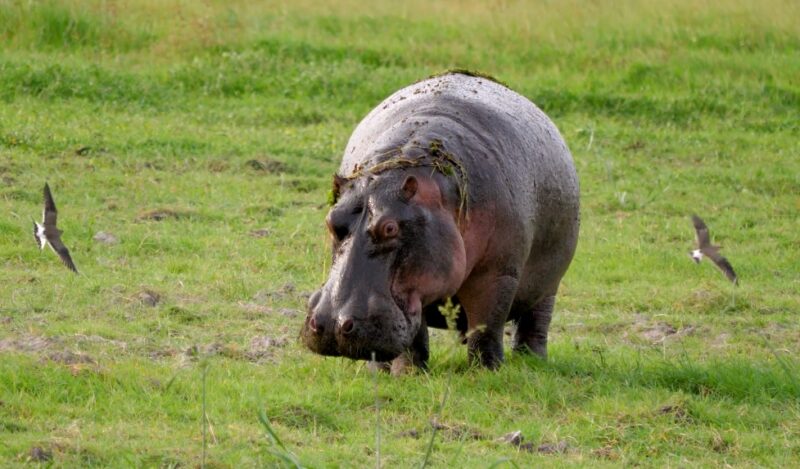
Before diving into the pink milk debate, let’s take a moment to appreciate the hippopotamus in its natural habitat.
A Life Between Water and Land
The name “hippopotamus” comes from the ancient Greek for “river horse,” and it’s a fitting title. These large animals spend a significant amount of their time in the water, which helps keep them cool and protects their sensitive skin from the sun.
Hippos are known for their unique skin secretions, which have given rise to another nickname: “blood sweat.” Despite the name, this isn’t actually sweat, nor is it blood.
Dietary Habits and Physiology
Hippos are primarily herbivorous, munching on grasses during their nightly forays onto land. Their physiology and dietary habits play a key role in the composition of their milk.
- Digestion: They have a unique gut flora that helps in breaking down cellulose from plants.
- Skin Secretion: As mentioned, they secrete a unique substance that plays a role in their health and protection.
So, Is Hippo Milk Really Pink?
Now, to the heart of the matter. Is the milk of this semi-aquatic giant actually pink?
What Science Says
It’s true that hippos produce a unique skin secretion that is reddish-orange, sometimes called “blood sweat.” This substance contains two main pigments: hipposudoric acid and norhipposudoric acid. The former is reddish-orange, while the latter is bright orange.
This secretion acts as a sunblock, and it also has antibiotic properties. However, contrary to popular belief, this secretion has nothing to do with their milk. Scientifically speaking, there is no concrete evidence to support the claim that hippo milk is pink.
Origins of the Myth
So where did this belief originate? One possibility is that the confusion may have arisen due to the “blood sweat” secretion of hippos. Over time, this unique aspect of hippo biology may have been mistakenly associated with their milk, leading to the myth we hear today.
Additionally, given the elusive nature of these animals and the danger they pose, firsthand observations of hippo mothers nursing are rare, leaving room for speculation.
Implications and Takeaways
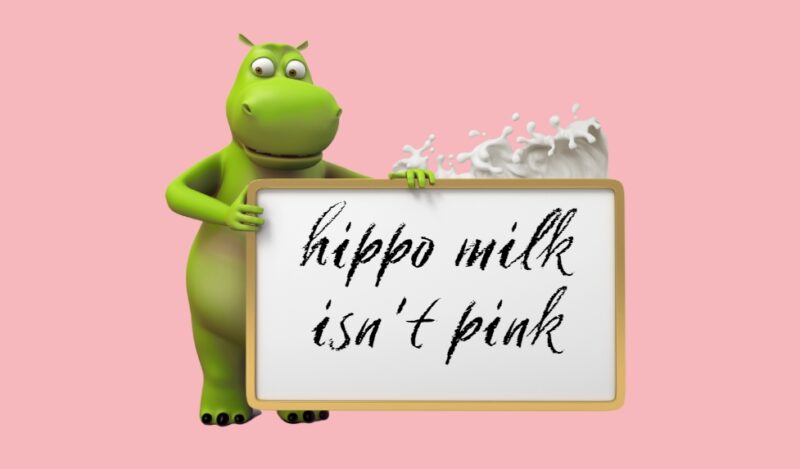
Even though hippo milk isn’t pink, understanding the basis of such myths offers valuable insights.
The Power of Word-of-Mouth
This pink milk myth is a testament to the power of stories and word-of-mouth. It’s crucial for us to approach such claims with a healthy dose of skepticism and to turn to scientific research for clarity.
Appreciating Nature’s Wonders
Even if the milk isn’t pink, hippos are full of unique and fascinating qualities. From their amphibious lifestyles to their surprising agility and speed, there’s a lot to admire about these giants and their babies.
- Protection Mechanisms: The “blood sweat” is a testament to nature’s creativity in ensuring survival.
- Social Creatures: They have intricate social hierarchies and relationships, making them an intriguing subject for wildlife enthusiasts and researchers alike.
Hippo Milk and Its Composition
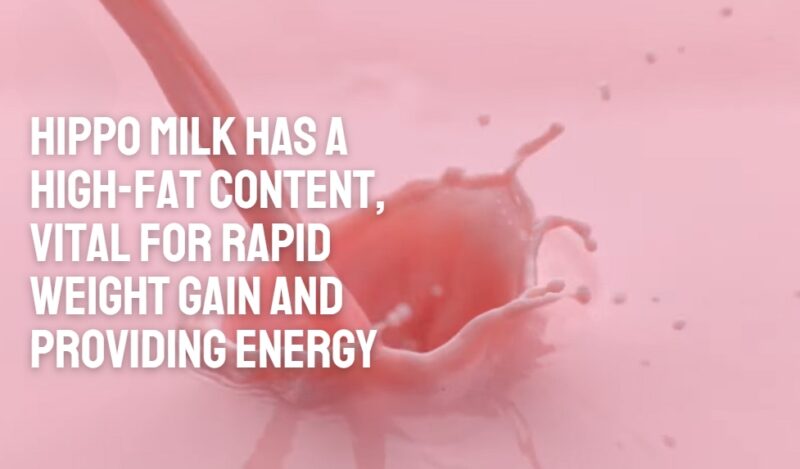
Every myth often has a kernel of truth or a reason for its inception. Though hippo milk isn’t pink, it’s remarkable in its own right. Rich in Essential Nutrients Calves grow rapidly in their first year, and the composition of hippo milk reflects the need for this rapid growth. Some findings about its nutritional composition include:
- High Fat Content: Similar to other large mammals like whales, hippo milk has a high fat content, vital for rapid weight gain and providing energy.
- Proteins and Minerals: Ensuring bone growth and muscle development, the protein and mineral content is significant.
Adapted for Aquatic Nursing
The Larger Picture: Myths in the Animal Kingdom
The pink milk myth isn’t the only fascinating tale in the animal kingdom. Many animals come with their own set of myths and misconceptions, a reflection of human curiosity and sometimes, misinformation.
Elephants and Their Memory
It’s often said that “an elephant never forgets.” While they do have impressive memories, they don’t remember everything. However, matriarchs remember vital locations like water holes, which can be lifesaving during droughts.
Ostriches Burying Their Heads in Sand
Another myth suggests that ostriches bury their heads in the sand when scared. In reality, they lay their heads on the ground to blend in, which might appear from a distance as if their heads are buried. Myths, while intriguing, often overshadow the genuinely remarkable truths about these creatures.
FAQs
No, the pink milk rumor has been widespread, especially after National Geographic mentioned it in 2013. However, like all mammals, hippos produce white or off-white milk for their young.
The confusion might arise from their secretion, often referred to as “blood sweat,” which turns orange-red in the sun. If this secretion mixes with the milk, it might give it a pinkish hue, but such occurrences are rare.
Final Words
While the allure of pink milk is enchanting, it seems that science doesn’t back this particular claim. Yet, the world of the hippopotamus remains as fascinating as ever, offering endless opportunities for discovery and learning.
Related Posts:
- Banded Water Snake: Facts, Diet, Habitat - Secrets…
- Texas Rat Snake Facts, Diet, Habitat - The Lone…
- Do Sharks Lay Eggs? Facts On Shark Eggs & Mermaid’s Purses
- Forest Animals – Pictures & Fun Facts On Animals…
- White-Lipped Tree Frog - Pictures, Videos and…
- 10 Common Mudpuppy Facts, Pictures & Information


